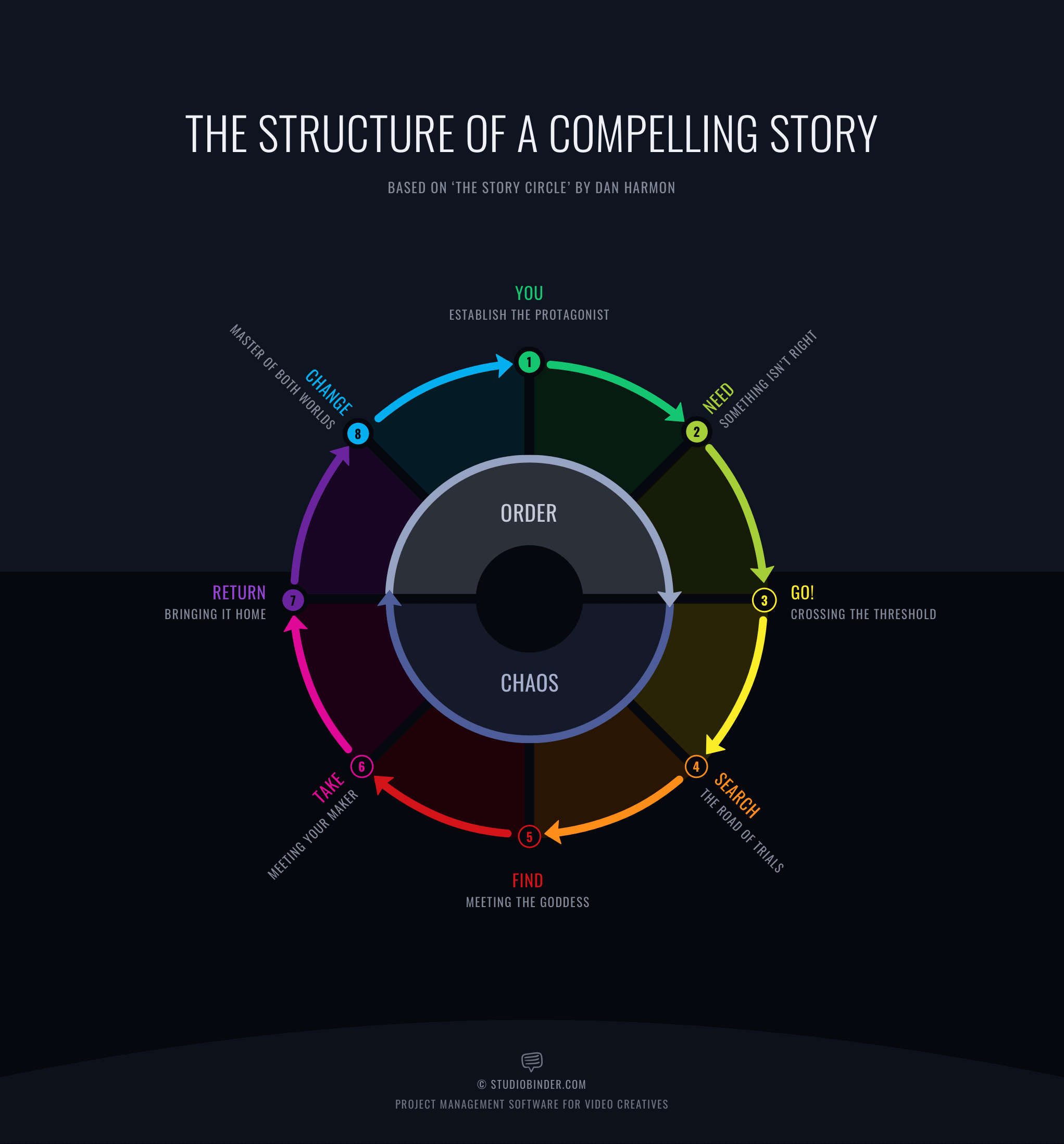Storytelling is a captivating art that has been embedded in human culture for centuries. And in today’s fast-paced and competitive marketing landscape, the role of storytelling has become crucial.
Effective storytelling in marketing has the power to captivate audiences, foster emotional connections and drive conversions.
So whether it’s through brand narratives, advertising campaigns or content marketing strategies, incorporating storytelling into your marketing efforts can elevate your brand and leave a lasting impact on your audience.
The Impact of Storytelling in Marketing
When you think about engaging individuals who can captivate an entire room, those who come to mind are public speakers and people who have an interesting experience to share.
These masters of their craft possess a unique ability to hold your attention, transporting you to different worlds and touching your heart with their narratives. Stories have been an integral part of human culture since ancient times, connecting people, passing down knowledge and evoking emotions.
In the realm of marketing, the power of storytelling is undeniable.
Companies like Disney, renowned for their magical storytelling approach, have harnessed the influence of story to promote their films, attractions, merchandise, and more.
Disney CEO Bob Chapek says:
“You have to make a connection with people. Often times that connection is done through music. Sometimes it’s done through a character. But it really is always done through a story…. It is about personal connection.”
Through their enchanting tales, Disney creates emotional connections with audiences of all ages, evoking joy, wonder, and nostalgia. From the classic fairy tales of princesses and true love to the modern adventures of superheroes, Disney stories have become an integral part of our collective consciousness:

Okay, so Disney is great at storytelling. That’s no surprise; that’s what they do for a living. They have entire departments devoted to writing stories. But what about storytelling in marketing?
Think about visionaries like Steve Jobs, the co-founder of Apple:

Jobs understood the significance of storytelling in marketing. He was known for his captivating presentations that felt more like compelling stories than mere product pitches. He had a remarkable ability to convey the essence of Apple’s products through narratives that resonated with the audience.
When Jobs returned to Apple in 1996, the company wasn’t doing well. He decided to rebrand Apple and show people not just what they sold, but what the company stood for, how they wanted to make people feel. He launched the “Think different” ad campaign, which still touches people emotionally more than twenty-five years later:
Jobs understood that people don’t just buy products; they buy into the stories behind them. By crafting narratives that showcased Apple’s innovative spirit, user-friendly design, and groundbreaking technologies, Jobs created a loyal following of customers who eagerly awaited each new product launch.
In today’s saturated marketplace, where consumers are bombarded with countless advertisements and marketing messages, storytelling provides a powerful way to cut through the noise and connect with customers on a deeper level. It allows brands to differentiate themselves, evoke emotions and build lasting relationships with their audience.
The Importance of Emotional Storytelling
One of the key elements that make storytelling so powerful in marketing is its ability to evoke emotions. Effective storytelling takes the audience on an emotional rollercoaster, creating ups and downs and keeping them fully invested. Think about the impact of movies that make you laugh, cry or feel suspense.
By tapping into emotions, storytelling becomes a persuasive tool that can influence consumer behavior:
Since people remember stories 22x more than facts and figures, storytelling in your content can boost conversion rates.
Additionally, relatability is crucial in storytelling. When people can relate to the characters or scenarios presented in a story, they feel a stronger connection and are more likely to engage with the brand. This connection can ultimately translate into customer loyalty and conversions.
So it is essential to ensure that the stories told are relatable and relevant to the target audience.
A prime example of the consequences of irrelevant storytelling can be seen in the political advertisements of Michael Bloomberg’s presidential campaign. The commercials focused solely on his immense wealth and success, making it challenging for the majority of people to relate to his story.
As a result, the campaign failed to resonate with the audience and did not achieve the desired impact.
Dive Deeper: 9 Examples of Storytelling Marketing to Inspire Your Next Campaign
Crafting a Compelling Story: The Harmon Circle Framework
To enhance your storytelling capabilities, it’s helpful to follow a structured framework. One such framework is the Harmon Circle, also known as Dan Harmon’s story circle:

This framework offers a step-by-step guide to crafting engaging narratives.
Let’s explore the different story elements of the Harmon Circle using the example of the beloved movie, The Lion King:

The 8 steps of Dan Harmon’s Story Circle:
- The You: Introduce the protagonist and the world they inhabit. In The Lion King, Simba is born, and his potential to become the next king is established.
- The Need: Define the protagonist’s goal or desire. Simba’s need is to prove himself and claim his rightful place as king.
- The Go: The protagonist embarks on a journey. Simba leaves the kingdom after his father’s tragic death, feeling responsible for the event.
- The Search: The protagonist searches for what they need. Simba encounters Timon and Pumbaa, who teach him a carefree and carefree lifestyle away from his responsibilities.
- The Find: The protagonist finds what they are looking for. Simba reunites with his childhood friend, Nala, and realizes the importance of his duty to his kingdom
- The Take: The protagonist takes hold of what they found. Simba decides to return to his homeland, challenge his evil uncle Scar, and reclaim his place as king
- The Return: The protagonist returns to where they began. Simba confronts Scar and his past, facing the ultimate test of his bravery and strength.
- The Change: The protagonist undergoes a transformation. Simba defeats Scar, takes his rightful place as king, and learns the importance of responsibility and leadership. Simba restores balance to the Pride Lands, reunites with his family, and brings harmony back to his kingdom.
If we follow this story circle framework, you, as a marketer, can create engaging narratives that take your audience on a captivating journey. Whether it’s a brand story, a testimonial or a content piece, this structured approach helps engage the audience and keep them invested in the brand’s message.
Storytelling Across Different Marketing Channels
Storytelling can be incorporated into practically any marketing channel to enhance brand communication and engagement. Let’s explore how storytelling can be utilized in different contexts:
- Brand Storytelling: Brands can create compelling narratives that reflect their values, history and mission. By sharing their unique stories, brands can establish an emotional connection with their audience, differentiate themselves from competitors, and build brand loyalty. For those looking to elevate their storytelling efforts, partnering with a brand storytelling agency can provide the expertise needed to craft impactful narratives.
- Content Marketing: Content creation platforms such as blogs, articles and videos provide opportunities to tell stories that resonate with the target audience. By focusing on informative, entertaining or inspirational content, brands can engage users and drive traffic to their websites.
- Social Media Marketing: Social media platforms offer a rich landscape for storytelling. Brands can leverage visual content, micro-stories, user-generated content, and interactive elements to create immersive brand experiences and foster community engagement.
- Influencer Marketing: Collaborating with influencers who align with the brand’s values and target audience allows for the integration of storytelling into sponsored content. Influencers can share personal experiences and endorse products or services in a way that feels authentic and relatable.
Dive Deeper: The Art of Storytelling in Luxury Ads: Examples and Insights
Final Thoughts on Storytelling in Marketing
From captivating brand narratives to relatable content pieces, storytelling allows brands to connect with their audience and build a sense of loyalty. The Harmon Circle framework provides a structured approach to crafting compelling narratives, ensuring that brands deliver messages that resonate with their target audience.
As technology continues to evolve, marketers should explore innovative ways to integrate storytelling across various channels, including brand storytelling, content marketing, social media and influencer collaborations.
By harnessing the power of storytelling, brands can create meaningful connections, foster brand advocacy and, ultimately, drive business success in an increasingly competitive market.
If you’re ready to grow your business through storytelling, Single Grain’s content marketing experts can help!👇
Repurposed from our Marketing School podcast.





